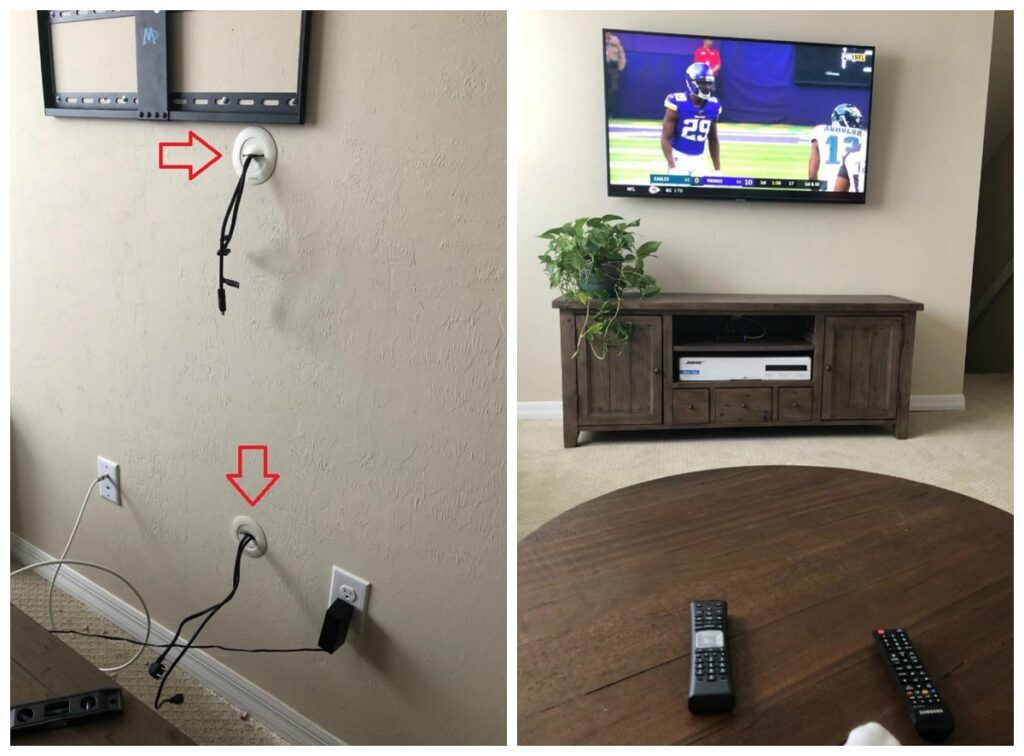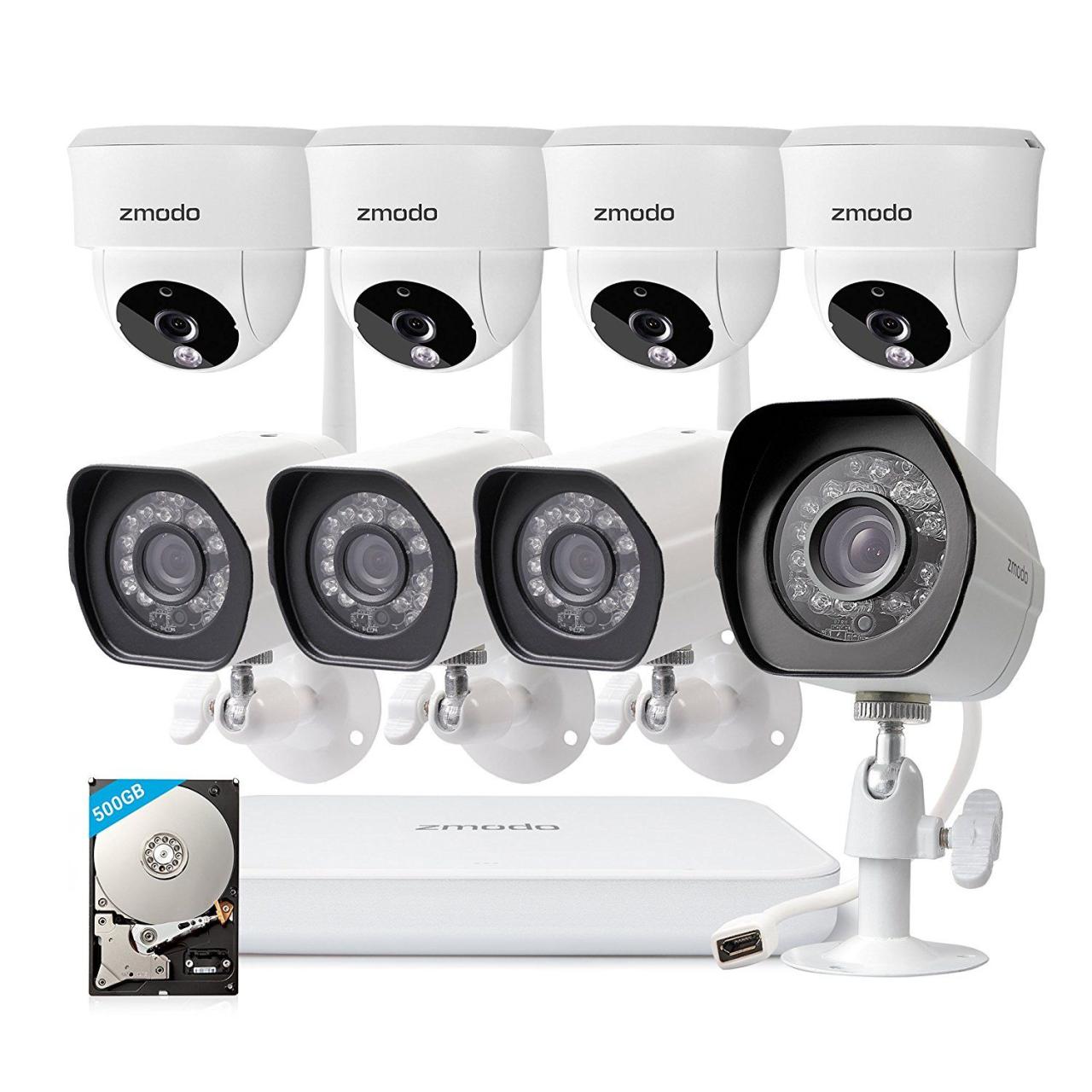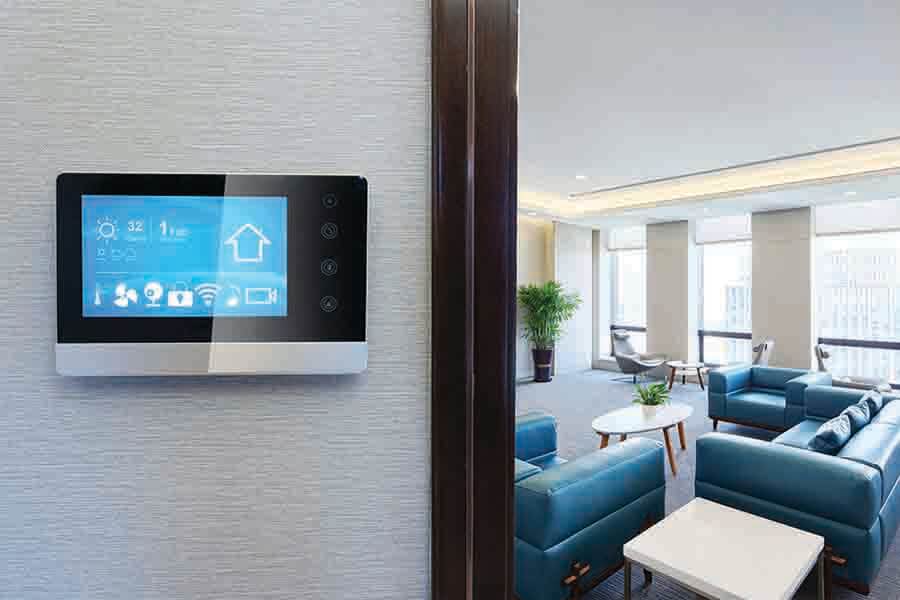How to hide wires and cables in a living room setup is a common concern for homeowners seeking a clean, modern aesthetic. A tangle of wires detracts from even the most beautifully designed space, but thankfully, there are numerous solutions, ranging from simple organizational techniques to more involved home renovations. This guide explores various methods for concealing those unsightly cords, from cleverly using existing furniture to incorporating more permanent solutions like in-wall cable chases.
We’ll cover everything from basic cord management to advanced techniques, ensuring your living room looks its best.
This guide will walk you through a variety of approaches, from the simple act of tucking wires behind furniture to more ambitious projects involving in-wall installations. We’ll examine different wire management systems, explore creative concealment techniques using everyday household items, and even discuss the advantages and disadvantages of switching to wireless technology. By the end, you’ll have a clear understanding of how to choose the best method—or combination of methods—to achieve a wire-free living room that’s both functional and aesthetically pleasing.
Concealing Wires Behind Furniture
Concealing wires behind furniture is a simple yet effective way to improve the aesthetics of your living room and prevent tripping hazards. By strategically placing furniture and employing clever routing techniques, you can create a clean and uncluttered look. This method is particularly useful for hiding power cords for TVs, sound systems, and other electronics.
Furniture Choices for Wire Concealment
Choosing the right furniture is crucial for successful wire concealment. Different pieces offer varying levels of hiding capacity, accessibility for maintenance, and aesthetic impact. The following table summarizes the pros and cons of common furniture choices.
| Furniture Item | Hiding Capacity | Accessibility | Aesthetic Impact |
|---|---|---|---|
| Sofa | Moderate; depends on sofa design and depth. | Low; requires moving the sofa to access wires. | Minimal impact if done correctly; wires are hidden. |
| Entertainment Center | High; usually features compartments and cable management systems. | Moderate; access through doors or back panels. | Can enhance the aesthetic if the entertainment center is well-designed. |
| Bookshelf | Moderate; depends on shelf spacing and design. | High; easy access to wires behind the shelves. | Minimal to moderate impact; wires may be visible depending on placement. |
| TV Stand | High; often includes cable management features. | High; wires are easily accessible from the back or sides. | Can be neutral or enhance the aesthetic depending on the design. |
Living Room Layouts with Concealed Wires
Here are three examples of living room layouts showcasing effective wire concealment:
Layout 1: Sofa and Entertainment Center
In this layout, the TV is placed on an entertainment center against a wall. Wires from the TV, streaming devices, and game consoles are routed through the entertainment center’s cable management system. Excess wires are gathered and secured with zip ties before being fed down the back of the entertainment center and into the wall. The sofa is positioned in front of the entertainment center, completely concealing the wires.
A small gap between the sofa and the wall allows for airflow and prevents overheating of electronics.
Layout 2: Bookshelf and Floor Lamp
Neatly hiding wires and cables is key to a stylish living room. Clever cable management can really elevate the look, especially when you’re working with an open-plan design. For inspiration on maximizing space and flow in your open-plan home, check out these living room layout ideas for open plan homes ; then, you can seamlessly integrate your cable solutions into your beautiful new layout.
Remember, strategic placement of furniture can also help conceal those pesky wires!
This layout utilizes a bookshelf to conceal wires leading to a floor lamp and other devices plugged into a nearby power strip. Wires from the floor lamp are routed behind the bookshelf, and the power strip is placed on a shelf out of sight. Books and decorative items on the shelves help to further camouflage the wires. This is particularly effective for hiding multiple wires leading to smaller devices.
Layout 3: Sectional Sofa and Wall-Mounted TV
A wall-mounted TV eliminates the need for a large entertainment center. Wires are run along the wall inside a cord cover, which blends with the wall’s color. The sectional sofa is positioned to cover the cord cover completely. This method creates a clean, minimalist look. The wall-mounted TV allows for a more flexible arrangement of the sofa and other furniture, without compromising wire concealment.
Securing Wires Behind Furniture
Properly securing wires is crucial to prevent them from becoming visible or detached. Several techniques can be used:
Use cable ties or Velcro straps to bundle wires together neatly. This prevents tangling and makes it easier to manage them. For more permanent solutions, consider using adhesive cable clips or wire organizers that attach to the back of furniture. These help keep wires in place and prevent them from sagging or becoming loose.
For wires that need to be routed behind furniture, consider using flexible wire channels or raceways. These come in various colors and can be easily attached to walls or furniture to create a neat and organized cable management system. These are also useful for situations where the furniture may need to be moved frequently.
Always ensure that wires are not pinched or crushed, especially behind heavy furniture. This can damage the wires and potentially create a fire hazard. Regularly check the wires for any signs of damage or wear.
Utilizing Wire Management Systems

Source: pinimg.com
Keeping your living room wires organized and hidden doesn’t just improve aesthetics; it also enhances safety and prevents tripping hazards. Wire management systems offer a variety of solutions to achieve this, ranging from simple to sophisticated options. Choosing the right system depends on your budget, technical skills, and the extent of the wiring you need to conceal.Wire management systems provide structured ways to route and conceal cables, offering a cleaner and safer living environment compared to simply tucking wires behind furniture.
Neatly hiding wires and cables is key to a clean living room. A good strategy is to use cable management solutions like cord covers or raceways, especially when you’re working with a best living room furniture arrangement for small spaces , which often involves strategically placed furniture to maximize space. This helps conceal wires while keeping your furniture layout functional and aesthetically pleasing.
Remember, clever placement of furniture can also assist in disguising unsightly cords.
They are available in various materials, designs, and price points, catering to diverse needs and aesthetic preferences. Proper installation ensures longevity and effectiveness.
Cleaning up those unsightly wires in your living room can be a real project! One way to tackle it is by using cable management systems, but first, you might want to document the process. Check out this great resource on video editing apps, like those listed on Aplikasi Edit Video , to create a before-and-after video of your cable-hiding efforts.
Then, you can easily share your success with friends and family, showcasing your newly organized space.
Cable Raceway Systems: Features, Cost, and Installation
Cable raceway systems are a popular choice for concealing wires along walls and baseboards. They are relatively inexpensive, easy to install, and come in various colors and finishes to match your décor. These systems typically consist of channels, covers, and connectors, allowing for flexible routing and expansion as needed. They are generally more cost-effective than more complex solutions like in-wall wiring but offer a significantly neater appearance than simply bundling wires with ties.
Some raceway systems even include features like integrated power outlets.
- Step 1: Planning and Measurement: Measure the length of the wall where you want to install the raceway and determine the number of cables you need to accommodate.
- Step 2: Marking and Cutting: Mark the wall according to your measurements. Use a utility knife or saw to carefully cut the raceway to the desired length, ensuring clean cuts to ensure a flush fit.
- Step 3: Attaching the Raceway: Use the included adhesive strips or screws to attach the raceway to the wall, ensuring it is securely fastened and level. Consider using a level for accuracy.
- Step 4: Routing the Cables: Carefully feed your cables through the raceway channel. Ensure there’s enough slack to prevent strain on the connections.
- Step 5: Attaching the Cover: Once the cables are routed, snap or screw the cover onto the raceway, concealing the wires completely.
Organizing Wires with Cord Clips and Ties, How to hide wires and cables in a living room setup
For managing wires behind an entertainment center, cord clips and ties offer a simple yet effective solution. This method allows for flexible organization and is easily adaptable to changing setups.Imagine the back of your entertainment center. We’ll use a combination of materials and sizes to demonstrate effective organization. First, we’ll use several small, black plastic cord clips (approximately 1 inch in diameter).
These will be strategically placed along the back panel of the entertainment center, spaced roughly 6 inches apart. These clips are used to secure individual cables to the panel, preventing them from dangling and creating a neat appearance.Next, we’ll use several white nylon cable ties (about 6 inches long). These are used to bundle groups of similar cables together.
For instance, all HDMI cables could be bundled with one tie, and all power cables with another. This keeps the wires organized and prevents tangling. The ties are secured loosely enough to allow for easy cable removal if necessary, but tight enough to prevent the bundles from becoming disorganized. The white ties contrast nicely against the black clips and the typically dark interior of the entertainment center.[Image description: A close-up image of the back of an entertainment center.
Black plastic cord clips are attached to the back panel, each securing a single cable. Groups of cables are neatly bundled together using white nylon cable ties. The overall effect is a clean and organized arrangement of wires.]
Incorporating Wires into Walls and Floors
Concealing wires within walls and floors offers a clean, integrated look, especially beneficial in open-plan living spaces or rooms with minimal furniture. However, this approach requires careful planning and execution to ensure both aesthetic appeal and electrical safety. It’s crucial to understand the relevant building codes and safety regulations before undertaking any such project. Improper wiring can lead to fire hazards and electrical shocks.Incorporating wires into walls and floors necessitates a thorough understanding of electrical safety and adherence to local building codes.
These codes vary by location, so checking with your local authority is essential before starting any work. Key considerations include using appropriate cable types for the intended application (e.g., in-wall rated cables), employing proper grounding techniques, and ensuring adequate ventilation to prevent overheating. Never attempt to work with electrical wiring unless you have the necessary expertise or are working with a qualified electrician.
In-Wall Cable Chase Installation
Installing in-wall cable chases provides a neat and organized way to conceal wires. This involves creating a recessed channel within the wall to house the cables. This method is generally more suitable for new construction or renovations where wall access is readily available. The following steps Artikel the process:
- Planning and Preparation: Carefully plan the cable route, ensuring it avoids obstructions like studs and pipes. Mark the path on the wall using a pencil. Consider the number and type of cables you need to accommodate.
- Cutting the Chase: Use a rotary tool with a suitable cutting bit, or a specialized chase-cutting tool, to carefully cut the channel along the marked line. Maintain a consistent depth to ensure a snug fit for the cables and the cover plate. Wear appropriate safety gear, including eye protection and dust mask.
- Cable Installation: Carefully feed the cables into the chase, ensuring they are neatly arranged and not overcrowded. Use cable ties or clamps to secure the cables in place and prevent movement. Leave some slack to allow for future adjustments or replacements.
- Finishing and Cover Plate Installation: Once the cables are securely in place, apply a suitable filler compound to the chase, ensuring it is level with the wall surface. Allow the filler to dry completely before sanding smooth. Finally, install the cover plate, ensuring a flush fit.
Challenges in Older Homes
Concealing wires in older homes presents unique challenges. Existing wall structures may contain asbestos or lead-based paint, requiring specialized handling and disposal procedures. Walls may also be less robust, increasing the risk of structural damage during the cutting process. Older homes often lack the standardized electrical systems found in newer constructions, potentially requiring significant modifications to meet current safety standards.
Identifying the location of existing wiring and plumbing is crucial to avoid accidental damage. It’s strongly recommended to consult with a qualified electrician and potentially a building inspector before attempting any electrical work in an older home.
Creative Concealment Techniques
Concealing wires doesn’t have to mean sacrificing style. With a little creativity, you can integrate wire management seamlessly into your living room’s decor, turning potential eyesores into design features. This section explores innovative methods for hiding wires using readily available materials and clever techniques.
Hiding Wires with Decorative Elements
Several decorative items can cleverly conceal unsightly wires. Picture frames, for instance, can be strategically placed to cover wires running along walls. A large, deep frame might even house a small channel to run the wires through. Wall hangings, such as tapestries or fabric panels, offer another excellent solution. Simply attach the hanging to the wall, ensuring the wires are hidden behind it.
Potted plants, particularly those with trailing vines or bushy foliage, provide a natural camouflage. Position plants strategically to obscure wires running along the floor or baseboards. Remember to choose plants appropriate for your lighting conditions and ensure they are not too close to heat sources from electronics.
Custom Baseboard Wire Concealment
A custom solution for hiding wires along baseboards involves installing additional molding or trim. This method offers a clean, integrated look. First, carefully measure the area where the wires will run. Then, purchase a length of matching baseboard molding or trim, slightly wider than the existing baseboard to allow space for the wires. You’ll need wood glue, finishing nails, wood filler, and sandpaper.
Attach the new molding to the wall above the existing baseboard, leaving a gap between the two pieces large enough to accommodate the wires. Securely fasten the wires within this gap using cable ties or staples. Once the wires are in place, fill any gaps with wood filler, sand smooth, and paint to match the existing baseboard for a seamless finish.
Consider using paintable caulk for a professional finish around the edges.
Repurposing Household Items for Wire Concealment
Many everyday household items can be repurposed to hide wires effectively.
Here are a few examples:
- Empty Cardboard Tubes (toilet paper rolls, paper towel rolls): These can be cut to length and used to conceal wires behind furniture or along walls. Advantages: readily available, inexpensive. Limitations: not very durable, prone to damage, not aesthetically pleasing.
- Plastic Cable Sleeves/Cord Covers: These are designed specifically for wire concealment and come in various colors and styles. Advantages: readily available, durable, aesthetically pleasing. Limitations: may not be suitable for all wire sizes or locations.
- Woven Baskets: Larger baskets can be strategically placed to hide a cluster of wires. Advantages: aesthetically pleasing, can add to the room’s decor. Limitations: may not be suitable for all wire types, can be bulky.
- Books: A stack of books can effectively hide wires running along a shelf or behind furniture. Advantages: easily accessible, blends in with existing décor. Limitations: may not be suitable for all wire configurations, might require a significant number of books.
Wireless Solutions
Cutting the cord isn’t just a trendy phrase; it’s a practical approach to a cleaner, more aesthetically pleasing living room. Wireless technologies offer a significant advantage in managing cables and improving the overall look of your home entertainment setup. Let’s explore how different wireless standards can help you achieve this.Wireless technologies like Bluetooth, Wi-Fi, and Zigbee offer various solutions for connecting your home entertainment devices, each with its own strengths and weaknesses regarding range, power consumption, and data throughput.
Understanding these differences is crucial for choosing the right technology for your needs.
Comparison of Wireless Technologies for Home Entertainment
The choice between Bluetooth, Wi-Fi, and Zigbee depends heavily on the specific application within your home entertainment system. Bluetooth excels in short-range, low-power connections, ideal for devices like wireless headphones or speakers. Wi-Fi provides a broader range and higher bandwidth, perfect for streaming high-definition video and audio. Zigbee, on the other hand, is a low-power mesh networking protocol best suited for controlling multiple smart home devices simultaneously, such as smart lighting integrated with your entertainment setup.
For instance, you could use Wi-Fi for streaming to your TV, Bluetooth for your soundbar, and Zigbee for smart lights that react to the audio.
Cleaning up those messy living room wires can be a real project! One way to document your progress, perhaps showing before and after shots, is to use a video editing app like Kinemaster Pro Mod apk. After you’ve neatly tucked away all those cables behind furniture or used cord covers, you’ll have a fantastic video to share.
Then you can relax and enjoy your now clutter-free space.
Advantages and Disadvantages of Wireless Devices
Transitioning to wireless devices offers numerous benefits, primarily the elimination of visible wires, resulting in a clutter-free living room. The ease of setup and reconfiguration is another significant advantage. Wireless systems are also generally more flexible, allowing you to easily rearrange your furniture without the hassle of re-routing cables. However, wireless solutions aren’t without drawbacks. Wireless connections can be susceptible to interference, leading to dropped signals or poor performance.
The initial cost of wireless devices might be higher than their wired counterparts, and battery life can be a concern for some devices. Range limitations might also necessitate strategically placed repeaters or extenders, potentially adding to the overall cost and complexity.
Addressing Wireless Interference Issues
Interference can significantly impact the performance of your wireless home entertainment system. Common sources include other Wi-Fi networks, cordless phones, microwaves, and even Bluetooth devices operating on overlapping frequencies. To mitigate these issues, you can start by identifying the source of interference using a Wi-Fi analyzer app on your smartphone. This app will show you the strength and frequency of nearby networks and devices.
Once identified, you can try to physically separate the interfering devices from your home entertainment system or change the Wi-Fi channel on your router to a less congested one. Using a wired connection for critical devices, such as your primary streaming device, can also provide a more reliable and stable connection. In some cases, investing in a mesh Wi-Fi system can significantly improve signal strength and coverage throughout your home.
Last Word
Transforming your living room from a tangled mess of wires to a sleek, organized space is achievable with a little planning and the right techniques. Whether you choose to strategically place furniture, install a cable management system, or embrace creative concealment ideas, the key is to select methods that best suit your home’s structure, your budget, and your desired aesthetic.
Remember to prioritize safety when working with electricity and always consult a professional for complex installations. With a bit of effort, you can enjoy a living room that’s as stylish as it is functional, free from the eyesore of visible wires.
Clarifying Questions: How To Hide Wires And Cables In A Living Room Setup
Can I use duct tape to hide wires?
While duct tape offers a quick fix, it’s not recommended for long-term solutions. It can damage walls and furniture, and the wires may become loose over time. Consider more permanent and aesthetically pleasing options.
What’s the best way to hide wires behind a wall-mounted TV?
Use a combination of cable management solutions. Consider in-wall cable chases (if feasible), or utilize cord covers that match your wall color. You can also use strategically placed furniture or wall art to partially conceal cords.
Are there any fire safety concerns related to hiding wires?
Yes, always ensure wires are not overloaded, are properly insulated, and are not trapped or pinched. Never run wires through walls without proper insulation and understanding of electrical codes. Consult a professional electrician if you are unsure.
How can I hide wires running across the floor?
Use floor cord covers or raceways designed to blend in with your flooring. You can also route them along baseboards, concealing them with molding or trim.
What if I have pets that might chew on wires?
Use protective sleeves or conduits to cover exposed wires. Secure wires tightly to prevent them from dangling and becoming tempting chew toys for pets.
- Soundproof Glass Your Guide to Quieter Spaces - June 2, 2025
- Energy-efficient windows Smarter Choices - June 2, 2025
- How to Calculate the Right Amount of Outdoor Lighting for My Property - February 21, 2025








